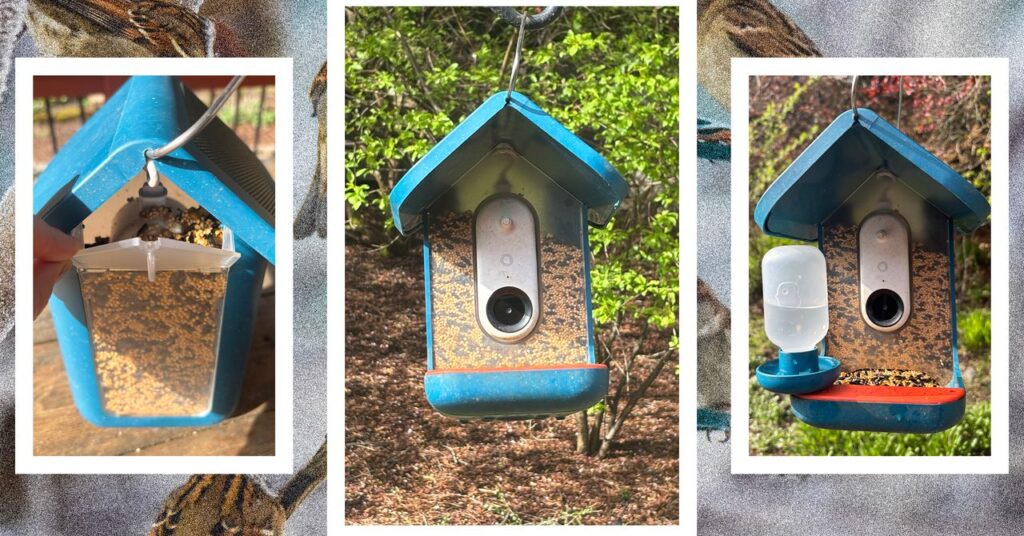The home page consists of a list of “postcards” taken by the camera. Each postcard allows you to scroll through multiple high-quality photos and a video with sound, which ranges in length from a few seconds to up to two minutes depending on what a bird might be doing. Sometimes the algorithm might also decide to send a video in slow-motion, but that only happened once, when a Steller’s jay spent an inordinate amount of time rummaging for a sunflower seed.
The AI identification runs along the top (I’ve found it to only be wrong occasionally, but my yard doesn’t get an especially huge variety of birds), and the postcard’s bottom has options to send, save, or edit, along with the occasional fact about the identified bird. The app sends a recap of the end of each day including the number of visits and number of different birds.
There’s also a tab for a collection of your favorite saved photos, as well as a live-view button and “BB TV,” which shows select clips from other Bird Buddy users’ feeds. (I’ve found its selection doesn’t change often.) Cleaning reminders are also a bonus, and perhaps most useful of all, the app has the ability to filter out visitors you’d rather not have in your postcard feed, such as squirrels or the same junco that shows up every 15 minutes.
Users can also choose a “curated experience” option, which relies on an AI algorithm to display only the “most interesting” captured photos and videos. Somewhat disappointingly, however, I’ve found that regardless of the settings, the sensor doesn’t seem to capture every bird that visits, even when all filters are turned off and the feed is set to “show all.”
This problem seems to have gotten worse over time—even on mornings after a fresh seed refill, the camera often captures only one postcard, while I can look out the window and see dozens of birds on the feeder over the course of several hours. Online comments indicate this is a somewhat regular occurrence with the Bird Buddy, though angling it where there’s more or less light has helped in some cases (not mine).
Granted, I appreciate that I don’t have to wade through 100 snapshots of one sparrow or a random squirrel butt, as is the case with other feeders. But I would like at least a record of every bird that visited, not just the ones the sensor or algorithm deems worthy. Hopefully this is an app-related issue Bird Buddy can refine in future updates.
Bright Ideas
The model I have sports the optional built-in solar roof, which I highly recommend. (If you have the original Bird Buddy or the non-solar Pro version, you can buy the roof separately for $79.) Not only does this mean the feeder can charge outside indefinitely and not require two separate mounts attached by a cord (which is at risk for rodents to chew), but this allows for it to be placed on a shepherd’s hook or pole. These are the preferred mounting scenarios, as they make it easiest to abide by the 5-7-9 rule recommended by experts to deter squirrels and other nuisance animals: 5 feet off the ground, 7 feet away from structures, and 9 feet from overhanging branches.
Though I have not needed to bring the Bird Buddy in to charge in its four months outdoors, its battery has come perilously close to running out during especially overcast weeks—closer than any of my other feeders. The Pro will no longer take postcards once its charge dwindles to 12 percent, an unfortunate milestone the feeder did hit on one occasion.
Read the full article here

